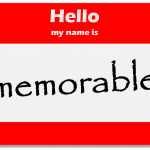If your web marketing and content development look like insurmountable obstacles, take a look at these ten recommendations that will help break it down into pieces and get you going.
Web Marketing Introduction
If you’re really, really nervous about online marketing, start here.
1. Web Marketing All-in-One Desk Reference For Dummies introduces you to all the basics without overwhelming you. And you’ll still know more than a lot of folks. Then you can graduate to the next level.
Web Design and Content
2. Bryan & Jeffrey Eisenberg are really smart about how customers think. “Call To Action” applies their smarts to creating websites that really do generate leads. This is NOT a technical book for developers. It’s for business owners and marketing professionals who guide the work of web developers.
3. Steve Krug’s Don’t Make Me Think is a funny and fast-reading book will totally change the way you think about your wellness website. Krug opens your eyes to the messy and muddled way that real people experience most websites.
4. Worried that nothing seems to happen when folks visit your wellness website? Start with Ginny Redish’s “Letting Go Of The Words: Writing Web Content That Works” to make sure visitors can find what they’re looking for, presented in the most usable way. Especially useful for websites with lots of content.
Inbound Marketing – Getting Customers To Come To You
5. Too often wellness businesses Twitter and YouTube and Facebook and blog like mad – without “connecting the dots” so that all this online marketing busywork actually produces business results. David Meerman Scott’s “New Rules Of Marketing and PR: How to Use Social Media, Blogs, News Releases, Online Video and Viral Marketing To Reach Buyers Directly” connects those dots.
6. Guy Kawasaki of Apple fame says “if you have more brains than money” then Halligan et al’s Inbound Marketing: Get Found Using Google, Social Media, and Blogs is the book for you. Especially useful: lots of practical advice about Google, social media and blogging, plus to-do lists at the end of chapter that tell you how to implement specific strategies. Brian Halligan and his cowriters
Outbound Marketing – Taking Marketing Into Your Own Hands
7. Good email marketing resource for first-time newsletter creators and do-it-yourselfers, whether you use Constant Contact or a different email service provider. The Constant Contact Guide to Email Marketing covers everything from CAN-SPAM to how to craft successful subject lines.
8. All about getting found in search engines. Read The Findability Formula: The Easy, Non-Technical Approach to Search Engine Marketing if you’re paying someone to do search marketing and SEO for you. Not so you can take over that job – but so that you can be a good judge of the services you’re buying. And if you want to do it yourself, you need this book’s advice on keyword selection, landing page design and PPC.
9. If Adwords floats your boat, you’ll love Advanced Google AdWords – good stuff for folks who have been working with pay-per-click campaigns for awhile, plus plenty of useful and comprehensible information for beginners, too. Updated for the most recent Google Adwords changes.
Website Analytics – Who’s Doing What On Your Website
10. Google Analytics, 3rd Edition gives you an in-depth explanation of pretty much all the features in the free and often underutilized Google Analytics tool. Straightforward information, not super-technical.
And a bonus suggestion if you’re hardcore about selling products online: Avinash Kaushik’s Web Analytics: An Hour a Day walks you through how to analyze who’s visiting and why, how they found you, what’s catching their eye (and what isn’t) on your website, where they drop out of their buying process.
Website Development Done Right
We don’t recommend doing this, so it didn’t make our official Top 10. But if you really, REALLY want to build your own site from scratch, start with Build Your Own Website The Right Way Using HTML & CSS. You’ll methodically learn best practices Instead of relying on outdated techniques like tables and in-line HTML formatting that make your website a maintenance nightmare for years to come.



